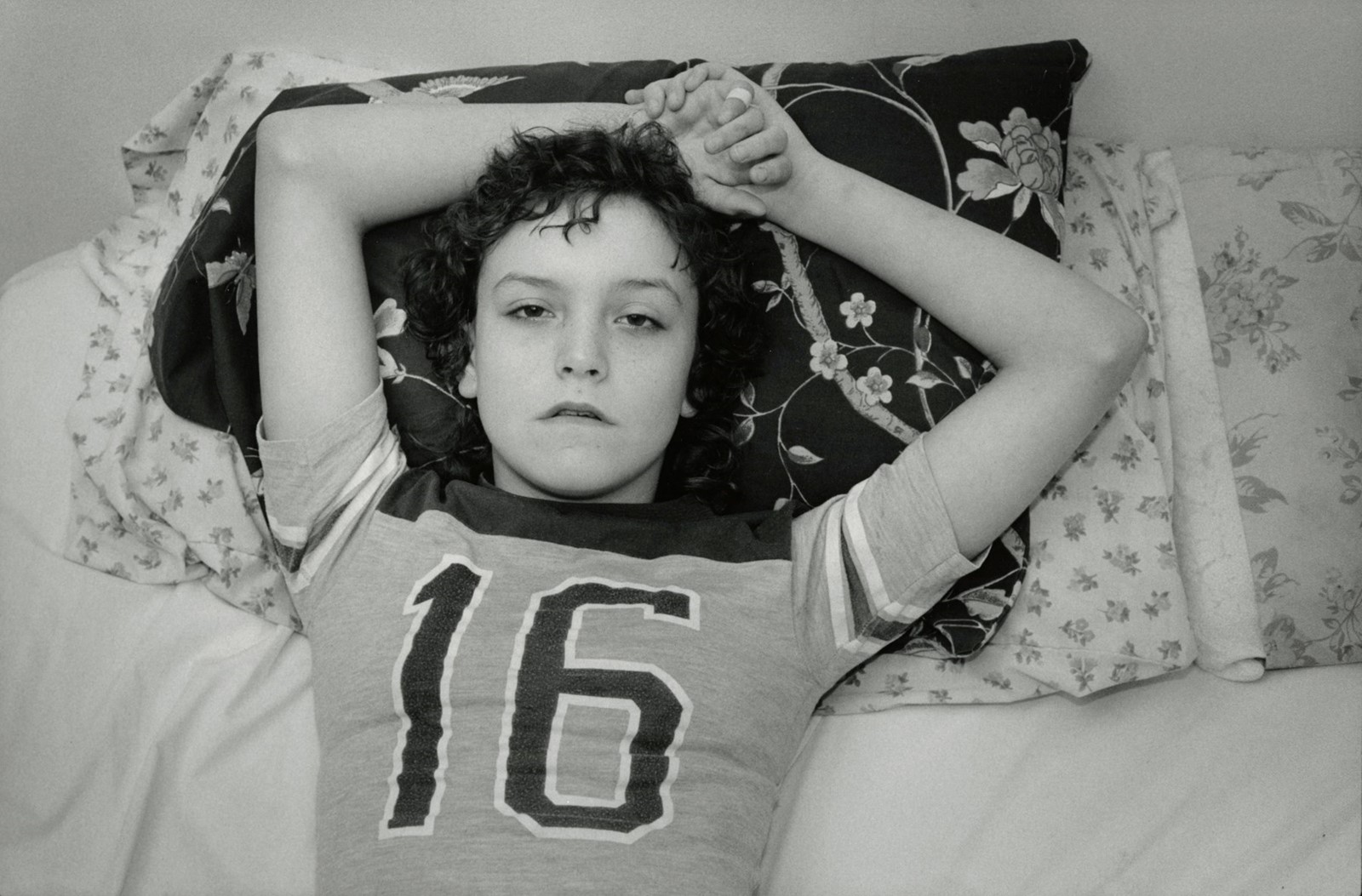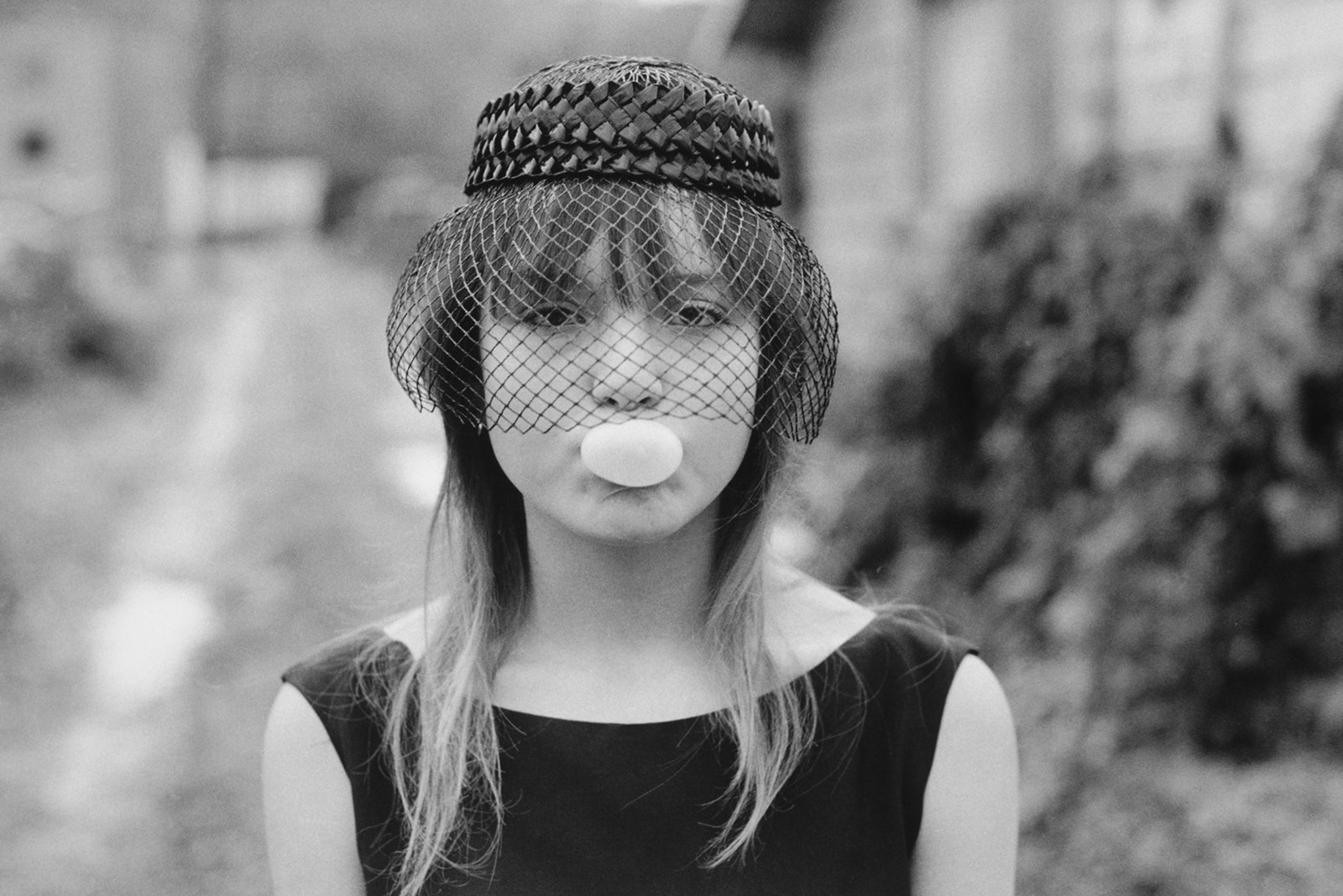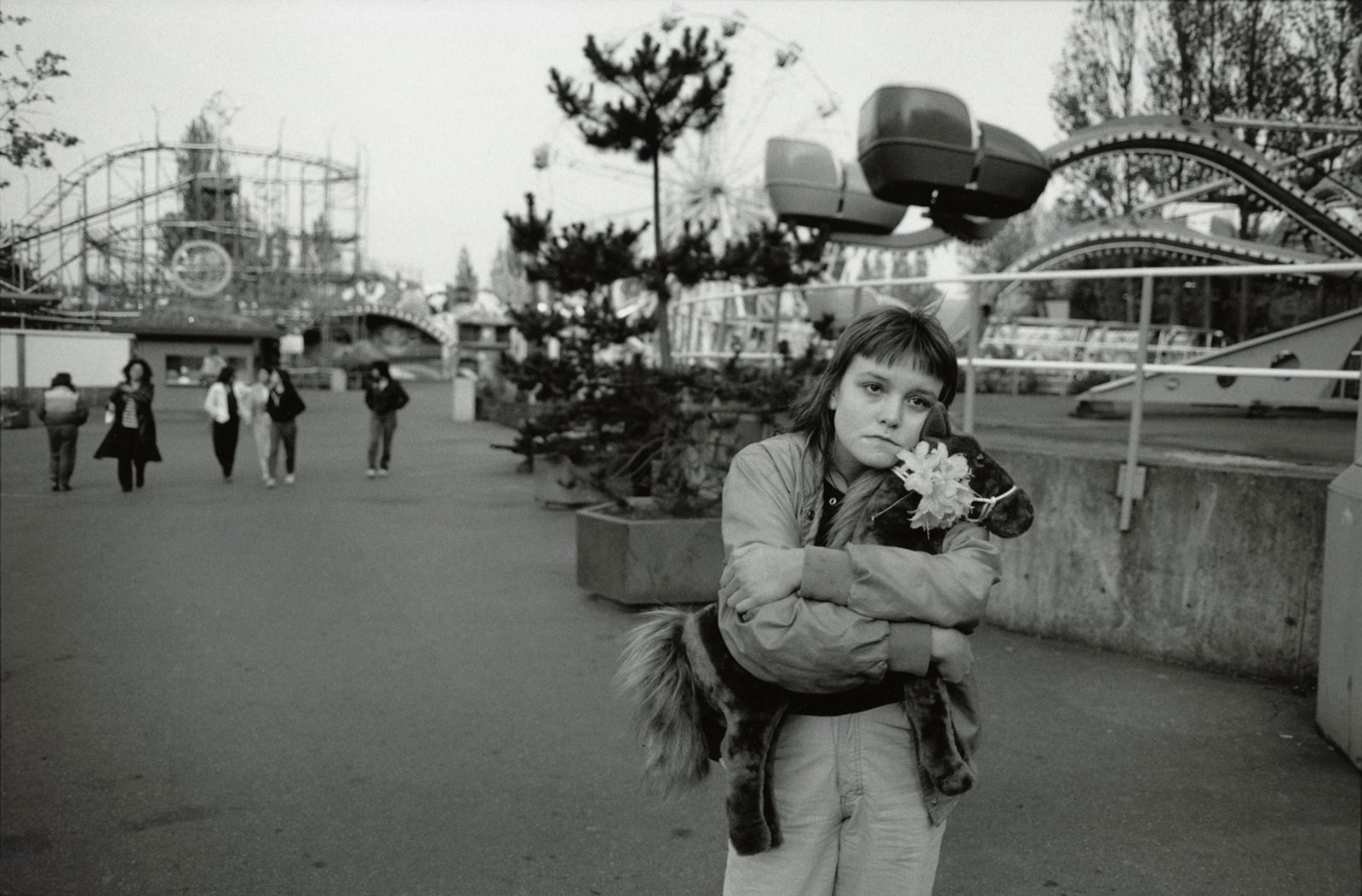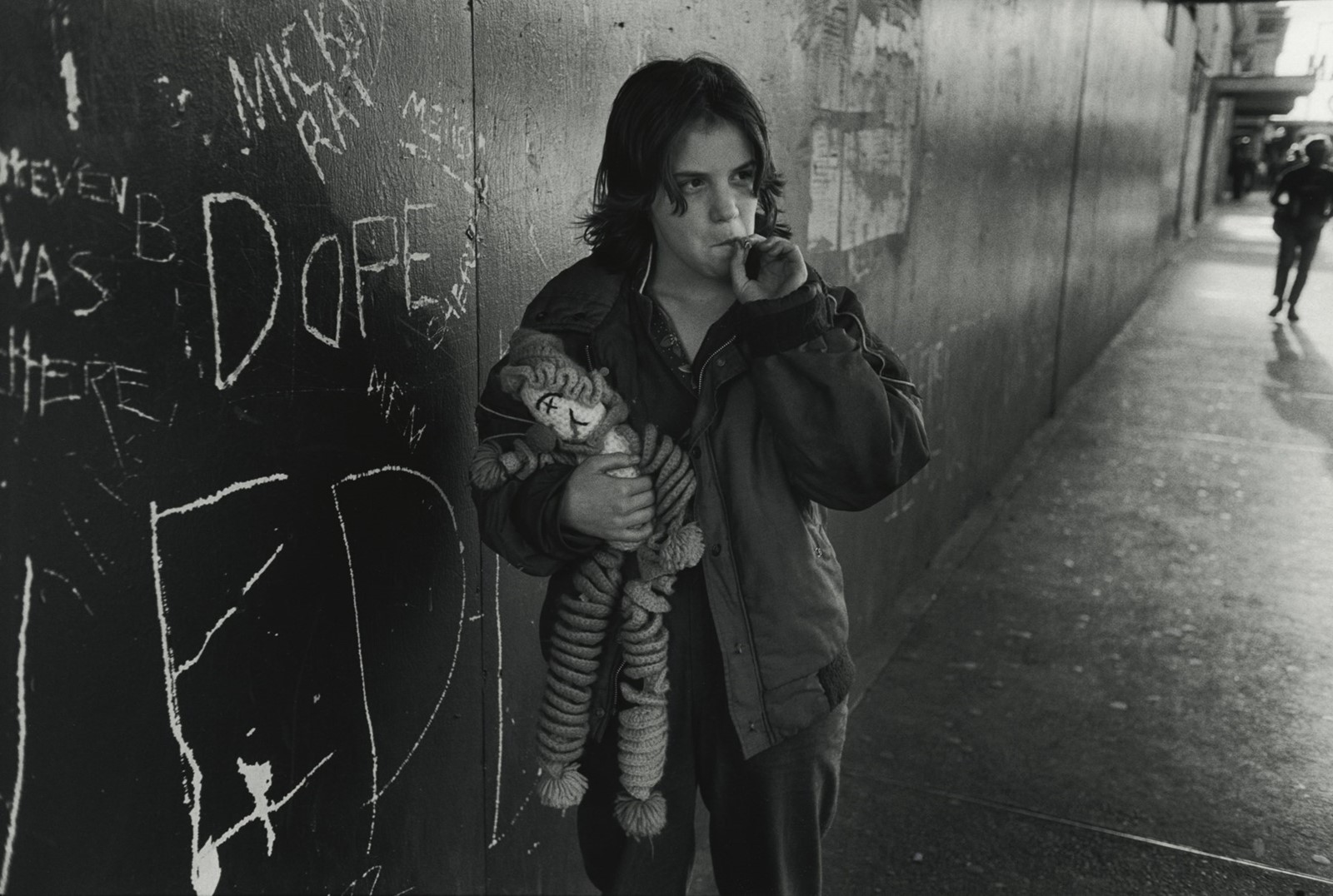Mary Ellen Mark’s acclaimed 1983 series Streetwise began as an assignment from LIFE magazine, in which she was to capture the street kids of Seattle, America’s “most liveable city”. The photographer’s “thinking was ‘well, if there are children living on the street in the most affluent city, the most liveable city in America, what the hell is going on in the other cities around the United States?’” explains Alona Pardo, curator at the Barbican. “It became a clarion call.” This subject matter was characteristic of the American photographer’s approach to image-making, Pardo explains. “Mary Ellen Mark spent her whole life as a humanist, wanting to bring representation, visibility to those who shied away from society or those who we don’t focus on; the invisible, the left-behind, the vulnerable.”
Mark’s searing photography is crucial to the Barbican’s latest exhibition, Another Kind of Life: Photography on the Margins, which Pardo curated, and which is entering its final weeks at the London gallery. Another Kind of Life spotlights 20 photographers whose work focuses on life’s outsiders – those who exist in sub- and countercultures, who go against the grain. “From the outset I wanted to avoid artists who had been sent on assignment and almost had a one-night-stand with these individuals and communities,” says Pardo. “That was really important, to kind of try and subvert and transgress that inherent voyeurism in photography, to ensure that the photographers and those who conspired with them had a relationship that went beyond the camera.”
“Mary Ellen Mark spent her whole life being a humanist, wanting to bring representation, visibility to those who shied away from society... the invisible, the left-behind, the vulnerable” – Alona Pardo
In Mark’s case, Streetwise gave a voice to the forgotten youth who inhabited a US city that seemed to be prospering, and although the series did start as a commissioned project, the photographer soon struck up an intense relationship with one of the street children. Pardo describes how Mark “became utterly seduced by Tiny”, a 13-year-old prostitute whose real name was Erin Blackwell. To Tiny, Mark became “a confidant, a friend”, and a central subject in not only the 1983 series, but in the rest of the photographer’s life and career. “Mary Ellen Mark, who had no children of her own, offered to adopt Tiny and bring her back to New York on the condition that she enrolled in school, which is a condition that Tiny simply couldn’t encounter,” explains Pardo. “She couldn’t entertain that thought so she stayed on the streets. So, Mary Ellen Mark, until her death in 2015, consistently went back and photographed her, and they made a number of films.”
Following the initial encounter, Mark returned in 1984 to train her lens once again on the group of children, this time in the form of a documentary of the same name which she produced with her husband Martin Bell. The film was nominated for an Academy Award that year. There is a balance to Mark’s photography, between an undeniable intimacy and her idiosyncratic impartiality; as Pardo remarks, “it’s full of tenderness. There is no judgement on her part, there’s no morality, she’s not glamorising it and she’s not shying away from the more difficult aspects of their lives.” Since she played such a prominent role in Mark’s life, Tiny’s portraits have become key to understanding the the photographer’s practice. Here, Pardo talks us through three of these unforgettable images and the remarkable stories they tell.

1. Tiny. Seattle, Washington, from the series Streetwise, 1983 [in bed]
“We don’t know exactly where this was taken but obviously it’s a very intimate shot. Mary Ellen Mark crossed the threshold into Tiny’s personal space and she’s lying on a bed. She’s in a moment of transitioning from girlhood and becoming a fully fledged adolescent, becoming a woman. By taking her off the street and shooting her in her bedroom, she takes her back to a place that is much more protective and protected. What’s great about Tiny was that she takes these great frontal portraits, with her looking straight to the camera, with no extraneous information in the shot, just the relationship we feel between the photographer, Tiny and the viewer. The viewer is allowed into this relationship by this direct gaze, so I think it’s a moment where Mary Ellen Mark’s befriended Tiny and they’ve forged a trusting relationship. She wanted to get behind the façade of this strong, street girl who’s kind of pedalling her way from the street, but this is that moment that the mask comes down and we see this vulnerable young girl on the cusp of womanhood.
“It’s quite a seductive image – I don’t think Mary Ellen mark would say it’s sexualised, but Tiny is just at that moment of finding her sexuality and she understands that. Mary Ellen Mark is showing this vulnerability and fragility but also self-awareness relationship. We know she didn’t know any better. You would never know this was a girl who was working out on the streets, from a very dysfunctional home. It’s quite an innocent image, with the pillow case, but we know that she has come from a dysfunctional place. Mary Ellen gives her back an innocence.”

2. Tiny. Seattle, Washington, from the series Streetwise, 1983 [with bubblegum]
“All of the images say ‘from Streetwise, 1983’ but in actual fact when you look at the next photograph – Tiny with the bubblegum – you can tell that she’s grown quite a bit older. Her hair’s different, she’s in a different pose and she obviously looks more streetwise, too. There’s a kind of precariousness but a danger to it as well. We see this sharp silhouette against a blurry background, and the background suggests to us that she’s in a bit of a wasteland. It seems a dangerous place and I think by blurring it out in a way she may have heightened that.
“I think the image feels gritted, older, and Tiny’s got this double mask on: a veil on her face which distances her from the viewer. She’s looking at camera, but there’s a kind of filter, and then the bubblegum talks to this insouciance, this devil-may-care attitude about her. There’s a certain defiance – in a way she seems to be hiding more. It’s more posed as well, I would say – not necessarily staged but there is a performance going on, she’s performing to camera with the bubblegum. Mary Ellen Mark is showing her as a much more sexual woman, as she’s become; there’s this kind of seduction about her. She’s on her way to a party, she looks like she’s dressed up and out for the night.”

3. Tiny. Seattle, Washington, from the series Streetwise, 1983 [at the funfair]
“This is probably the earliest image of the three. Again, Mary Ellen is so good at capturing this transition – she’s here, she’s a little girl with dreams and she’s in a kind of deep reverie. It’s a really poignant image – her grasping this cuddly horse with flowers on it – like she’s holding onto her childhood. I think for me it’s a metaphor for her harking back to a more innocent childhood. You can imagine that she’s at the funfair, enjoying a typical childhood activity – a day out on the rides at the theme park. What’s interesting is that she’s always alone in these photographs, we don’t see her in groups. She’s seen as a very solitary figure.
“It reminds me of this really famous image by Bruce Davidson of this girl in Soho, and she has a kitten in her hand and this girl is out in the world alone encountering all the dangers of the world, but she’s still a child. I think Tiny’s childlike qualities come out, but we know that she’s acting beyond her maturity, because at this time she’s out on the streets pimping herself out. She’s engaged in all these activities that a young girl really shouldn’t be – not that the photo tells us this. There’s a lot of childhood implicit in this photograph, and that’s heightened by the fact that it’s taken in a funfair, but she doesn’t look like she’s having fun. There’s no joy in any of these three photographs; what we see is a deeply troubled young girl becoming a young woman.”
Another Kind of Life: Photography on the Margins runs until May 27, 2018, at the Barbican Art Gallery, London.
